This article needs additional citations for verification .(June 2019) |
A list of the films produced in Mexico in 1945 given in alphabetical order (see 1945 in film):
This article needs additional citations for verification .(June 2019) |
A list of the films produced in Mexico in 1945 given in alphabetical order (see 1945 in film):
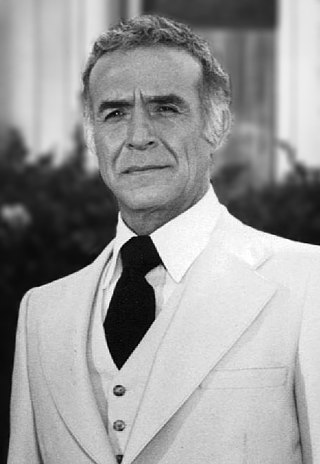
Ricardo Gonzalo Pedro Montalbán y Merino, KSG was a Mexican and American film and television actor. Montalbán's career spanned seven decades, during which he became known for performances in a variety of genres, from crime and drama to musicals and comedy.

The Three Caballeros is a 1944 American live-action and animated musical propaganda anthology film produced by Walt Disney and released by RKO Radio Pictures. The film premiered in Mexico City on December 21, 1944. It was released in the United States on February 3, 1945 and in the United Kingdom in March 1945. It marks the tenth anniversary of Donald Duck and plots an adventure through parts of Latin America, combining live-action and animation. This is the second of the six package films released by Walt Disney Productions in the 1940s, following Saludos Amigos (1942). It is also notable for being one of the first feature-length films to incorporate traditional animation with live-action actors.
With 1945 being the last year of World War II, the many films released this year had themes of patriotism, sacrifices, and peace. In the United States, there were more than eighteen thousand movie theatres operating in 1945, a figure that grew by a third from a decade earlier.

Leave Her to Heaven is a 1945 American psychological thriller film noir melodrama directed by John M. Stahl and starring Gene Tierney, Cornel Wilde, Jeanne Crain, and Vincent Price. It follows a socialite who marries a prominent novelist, which spurs a violent, obsessive, and dangerous jealousy in her. It is based on the 1944 novel of the same name by Ben Ames Williams, adapted by screenwriter Jo Swerling.

The 201st Fighter Squadron is a fighter squadron of the Mexican Air Force, part of the Mexican Expeditionary Air Force that aided the Allied war effort during World War II. The squadron was known by the nickname Águilas Aztecas or "Aztec Eagles", apparently coined by members of the squadron during training.
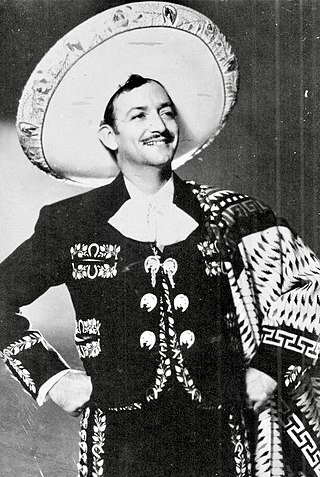
Jorge Alberto Negrete Moreno was a Mexican singer and actor.

Estudios Churubusco is one of the oldest and largest movie studios in Mexico. It is located in the Churubusco neighborhood of Mexico City.
Manuel Esperón González was a Mexican songwriter and composer. Along with the famous Mexican author Ernesto Cortazar, Esperón cowrote many songs for Mexican films, including "¡Ay, Jalisco, no te rajes!" for the 1941 film of the same name, "Cocula" for El Peñón de las Ánimas (1943), and "Amor con amor se paga" for Hay un niño en su futuro (1952). Other Esperón compositions have become Latin standards such as "Yo soy mexicano", "Noche plateada" and "No volveré", which was used in the first episode of the 2001 soap opera El juego de la vida. Among other performers, Pedro Infante, Los Panchos, and Jorge Negrete have made his songs well-known. His fame in the US derives from when his song The Three Caballeros was used in the Disney film The Three Caballeros (1945).
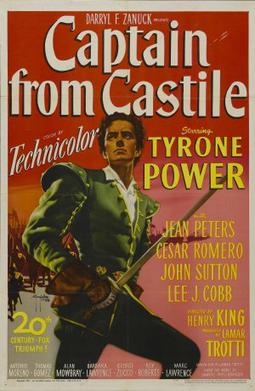
Captain from Castile is a 1947 American historical adventure film. It was released by 20th Century-Fox. Directed by Henry King, the Technicolor film stars Tyrone Power, Jean Peters, and Cesar Romero. Shot on location in Michoacán, Mexico, the film includes scenes of the Parícutin volcano, which was then erupting. Captain from Castile was the feature film debut of Jean Peters, who later married industrialist Howard Hughes, and of Mohawk actor Jay Silverheels, who later portrayed Tonto on the television series The Lone Ranger.

Arturo García Rodríguez, known professionally as Arturo de Córdova, was a Mexican actor who appeared in over a hundred films.
Julio Bracho Gavilán was a Mexican film director and screenwriter.
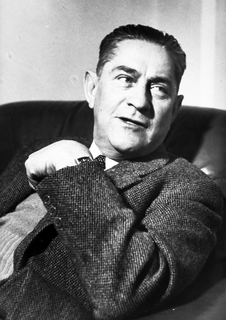
Fernando de Fuentes Carrau was a Mexican film director, considered a pioneer in the film industry worldwide. He is perhaps best known for directing the films El prisionero trece, El compadre Mendoza, and Vámonos con Pancho Villa, all part of his Revolution Trilogy on the Mexican Revolution.

Fiesta is a 1947 American Technicolor musical drama film directed by Richard Thorpe and starring Esther Williams, Ricardo Montalbán, Mary Astor and Cyd Charisse. It was released by Metro-Goldwyn-Mayer. The screenplay was written by George Bruce and Lester Cole.
The Rumberas film was a film genre that flourished in Mexico's Golden Age of Mexican cinema in the 1940s and 1950s. Its major stars were the so-called rumberas, dancers of Afro-Caribbean musical rhythms. The genre is a film curiosity, one of the most fascinating hybrids of the international cinema.
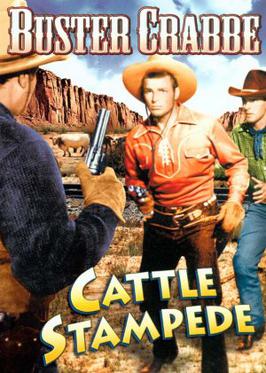
Cattle Stampede is a 1943 American Producers Releasing Corporation Western film of the "Billy the Kid" series directed by Sam Newfield.

The Cisco Kid Returns is a 1945 American Western film. Released on April 3, 1945, it was the first of three Cisco Kid films made that year with Duncan Renaldo as Cisco and Martin Garralaga as Pancho. In this release, Cisco's real name is Juan Francisco Hernandez. Cisco must clear himself of murder charges, while preventing his girlfriend Rosita (Callejo) from eloping with his rival John Harris (Pryor).

In Old New Mexico is a 1945 American western drama film. Released on May 15, 1945, it was the second of three Cisco Kid films made that year with Duncan Renaldo as Cisco and Martin Garralaga as Pancho.
South of the Rio Grande is a 1945 American western film. Released on September 15, it was the third of three Cisco Kid films made that year with Duncan Renaldo as Cisco and Martin Garralaga as Pancho.
Celia Montalván was a Mexican film, stage and television actress, who had a big impact on the development of Mexican cinema and photography.